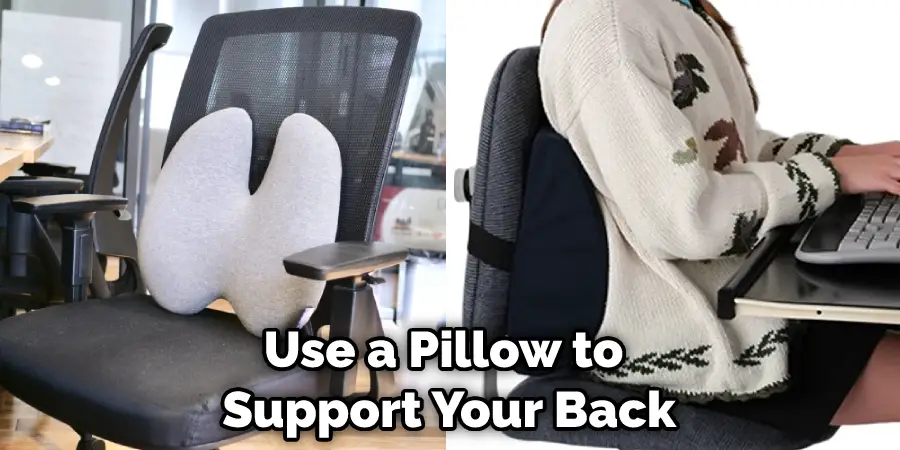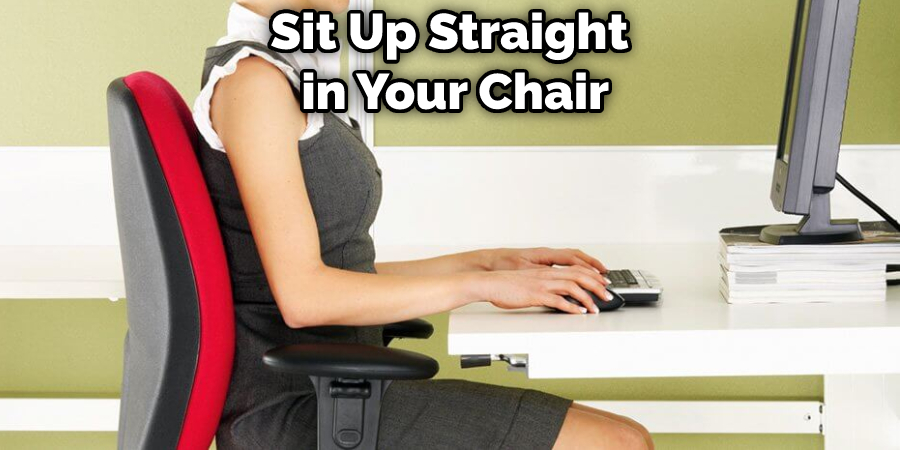Do you suffer from sciatica? If so, you’re not alone. Sciatica is a common ailment that affects millions of people. While the cause of sciatica can vary from person to person, there are some things that you can do to help ease the pain. This blog post will discuss how to sit comfortably with sciatica and provide some tips for finding relief. Keep reading for more information.

What Is Sciatica?
Before we discuss how to sit comfortably with sciatica, it’s important to understand what sciatica is. Sciatica is a medical condition that is characterized by pain in the sciatic nerve. The sciatic nerve is a large nerve that runs from the lower back down the leg. Sciatica can cause various symptoms, including pain, numbness, tingling, and weakness.
What Causes Sciatica?
Several things can cause sciatica. One common cause is a herniated disc. A herniated disc occurs when the outer layer of the disc ruptures and the inner layer bulges out. This can put pressure on the sciatic nerve and cause pain. Sciatica can also be caused by spinal stenosis, which is a narrowing of the spinal canal. This can also put pressure on the sciatic nerve and cause pain.
Another common cause of sciatica is pregnancy. This is because the baby’s weight can pressure on the sciatic nerve. Additionally, sciatica can be caused by a muscle imbalance in the pelvis or hips. This can cause the muscles to pull on the sciatic nerve and cause pain. Other sciatica causes include Piriformis Syndrome, spinal tumors, and nerve damage.
It’s important to note that sciatica can also be caused by sitting in an uncomfortable position. Lastly, sciatica can be caused by a lack of mobility in the spine. If you don’t move your spine often, the muscles and ligaments can become tight, leading to pain.
Some Easy Ways How to Sit Comfortably With Sciatica
1. Choosing a Comfortable Chair
When it comes to sitting with sciatica, comfort is key. You want to make sure that you choose a chair that is comfortable and will support your back. An ergonomic chair is a good option as it provides support and reduces pain. If you don’t have an ergonomic chair, you can use a pillow to support your back. Avoid chairs that are hard or have no back support.

2. Adjusting the Chair to Fit Your Body
Once you’ve found a comfortable chair, it’s important to adjust it to fit your body. You want to ensure that your feet are flat on the ground and that your knees are at a 90-degree angle. You also want to adjust the chair’s height so that your hips and knees are at the same level.
This will take pressure off of your spine and help reduce pain. To adjust the chair’s height, use a footrest or stool. First, sit in the chair and place your feet on the footrest or stool. Then, raise or lower the seat until your hips and knees are at the same level.
3. Placing a Pillow Behind Your Back
If you’re sitting in a chair that doesn’t have much back support, you can place a pillow behind your back for added support. This will help reduce pressure on your spine and ease the pain. To do this, sit in the chair and then place the pillow behind your back.
You may need to adjust the pillow depending on how much support you need. If the pillow is too high, it can put pressure on your neck. If the pillow is too low, it won’t do much to help with the pain.
4. Wearing Comfortable Clothing
It’s important to wear comfortable clothing when you have sciatica. This is because tight clothing can pressure the sciatic nerve and worsen the pain. Instead, opt for loose-fitting clothing made from breathable materials. This will help reduce the pain and keep you comfortable. Try to avoid wearing constrictive clothing, such as belts and tight pants.
5. Putting a Pillow Under Your Legs
You may find relief by placing a pillow under your legs if you’re lying down. This will take pressure off of your spine and ease the pain. To do this, lie on your back and place the pillow under your knees. If you’re pregnant, you can place the pillow between your legs. This will help reduce the pain and keep you comfortable. Avoid placing the pillow under your stomach, as this can put pressure on your back.
6. Taking Breaks Often
When you have sciatica, it’s important to take breaks often. This is because sitting or standing for long periods can worsen the pain. Lie down or walk around for a few minutes when you take a break. This will help reduce the pain and keep you comfortable. Avoid sitting or standing for more than 30 minutes at a time.

7. Stretching Your Legs
Stretching your legs can also help reduce the pain of sciatica. This is because it can help relieve the pressure on your sciatic nerve. To stretch your legs, first, sit in a comfortable position. Then, extend one leg in front of you and flex your foot. Hold this position for 30 seconds and then repeat with the other leg. You can also do this stretch lying down. If you’re pregnant, you can do this stretch by placing a pillow under your leg.
8. Getting Up and Moving Around
Getting up and moving around every 30 minutes can also help reduce the pain of sciatica. This is because it helps to keep your muscles from getting too tight. When you do get up and move around, be sure to stretch your legs. This will help reduce the pain and keep you comfortable.
9. Practicing Good Posture
Good posture is important when you have sciatica. This is because it helps to reduce the pressure on your spine. Sit up straight in your chair and avoid slouching. When you stand, hold your head up and keep your shoulders back. This will help reduce the pain and keep you comfortable. Try to avoid sitting or standing in the same position for too long.

10. Place an Ice Pack on Your Back
If you sit for long periods, you may find relief by placing an ice pack on your back. This will help reduce the inflammation and ease the pain. It’s important to wrap the ice pack in a towel so that it doesn’t directly touch your skin. Place the ice pack on your back for 15-20 minutes at a time. Try to do this several times a day.
11. Place a Heat Pack on Your Back
If the pain is chronic, you may find relief by placing a heat pack on your back. This will help relax the muscles and ease the pain. First, wet a towel with warm water and wring it out. Place the towel on your back and cover it with a dry towel. Leave the heat pack on for 15-20 minutes at a time. Try to do this several times a day. Avoid using a heating pad if you have diabetes or poor circulation.
Tips and Warnings on How to Sit Comfortably With Sciatica
Tips:
- Sit up straight in a chair with good back support.
- Use a small pillow or rolled-up towel behind your lower back for additional support.
- Place your feet flat on the ground.
- Avoid crossing your legs.
- Get up and move around every 30 minutes to keep your muscles from tightening up.
Warnings:
- Avoid sitting for long periods if possible.
- If you must sit for long periods, try to take frequent breaks to move around.
- If your pain is severe, consult a doctor or physical therapist for additional treatment options.
- Do not try to self-diagnose or self-treat your sciatica. This could make your condition worse.
- Do not ignore your pain. Seek medical attention if your pain is severe or persists for more than a few days.

How Long Does Sciatica Last?
Most cases of sciatica resolve within a few weeks with self-care. However, some people may experience chronic sciatica that lasts for months or even years. You should see a doctor if your pain is severe or persists for more than a few days. A doctor can help you find the source of your pain and recommend treatment options.
Treatment options for chronic sciatica may include physical therapy, exercises, and medications. In addition, surgery may sometimes be necessary to relieve the pressure on your sciatic nerve.
Conclusion
So there you have it, some tips on how to sit comfortably with sciatica. These tips can help reduce the pain and keep your muscles from tightening up. Remember to consult a doctor if your pain is severe or persists for more than a few days. We hope you find relief soon!
You Can Check It Out To How to Dress Up Folding Chairs

